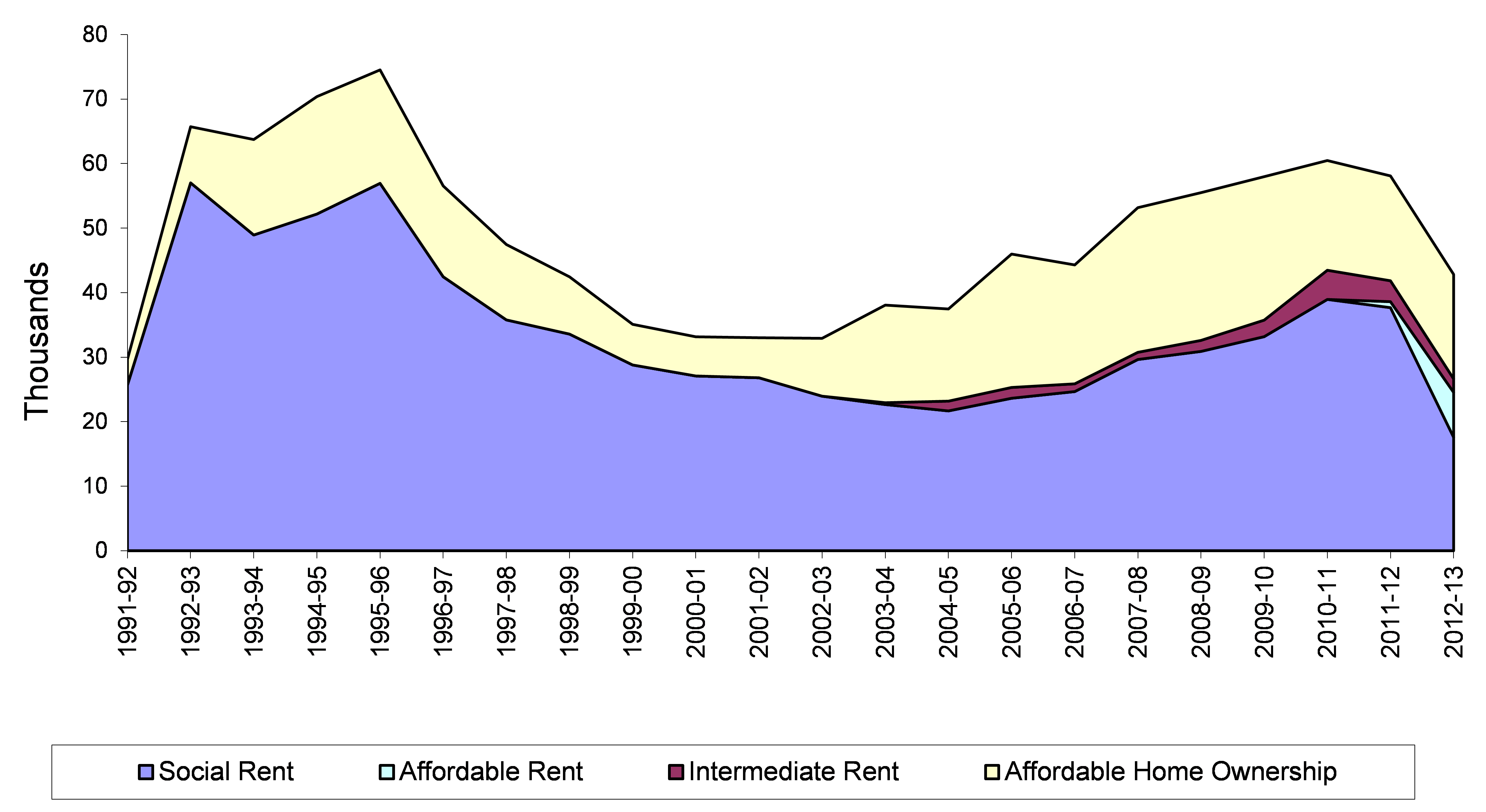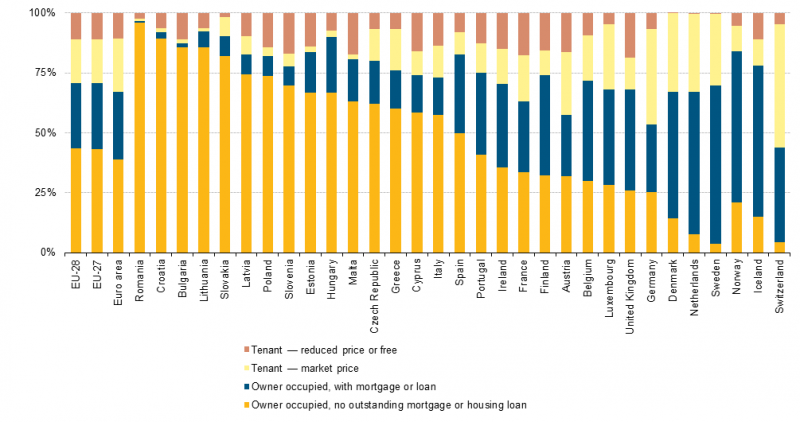The roof over our policies. Why housing finance mechanisms are not enough
Slightly more than a month ago, on 15 September 2014, over 100 people were evacuated from 50 Vulturilor Street, not too far away from central Bucharest. Taken out with all their belongings onto the streets, men, women and children squatted for days on the sidewalks in front of their former homes, before being offered a place in shelters by the local authority. The community – formed by low income groups – had been residing at the address since the beginning of 1990s, having been allocated there by their employing enterprises. The former nationalized estate was returned to its previous owners in 2002 and later on sold to a private developer in 2007, who had recently won a lawsuit for the evacuation of the community.
Unclear property rights, delayed restitution and evacuations are common threads of urban development in Romania. Nonetheless, what made the situation of the evacuated community special is that, for the first time, it triggered a timid, but real public debate on the right to adequate and social housing. And, unsurprisingly, it opposed non-governmental organisations arguing for the obligations of the City Hall to provide social housing to proponents of housing as a private commodity.
This debate is not singular, however, and matches changes on reforms of social welfare systems in other countries as well. What makes housing different from other policy areas is its nature itself. Housing is durable and capital intensive. And given the inequality of resources in our societies, it becomes quickly clear that those groups with greatest resources will have the highest quality homes, whereas the low income ones will live in unsatisfactory housing circumstances. Without a dwelling, it becomes difficult to satisfy other basic needs, which is why the UN’s Declaration of Human Rights includes the right to adequate housing and shelter. The kind of policies which local authorities and states can apply vary from regulation to taxation, subsidy and direct provision.
Post-socialist countries have clearly cut back on the latter, a fact which is proven by the high percentages of home ownership in Central and Eastern Europe. But other countries too have used housing to reorient their welfare systems, for example by supporting asset ownership and reducing public expenditure on social support. Netherlands has traditionally had a large share of social housing stock, amounting to 32% of the total and some 75% of the rental stock in the country (2012), but its share has been dropping after the 1980s due to declines in public subsidies. The UK has also witnessed a decrease in public provision of housing since the 1980s, coupled with a decrease in social rented housing.
 Affordable housing supply, England. Source: DCLG
Affordable housing supply, England. Source: DCLG
This has been increasingly a concern for cities like London, where rising housing prices and decreasing provision of social rented dwellings threatens to push lower income groups further away from the city center. According to a UN report, housing prices grew 139% in the United Kingdom between 1997 and 2004. The UK encouraged asset accumulation through “Help to buy” schemes, which allow purchase of homes even with small deposits. Such schemes, however, are rather targeted at the lower middle-income groups or at young first time buyers, rather than actual poor households. On the other hand, at least theoretically, if not in practice, affordable housing is a priority nationally, as well as in the London Plan. Despite property-led development and the abundance of regeneration schemes in the more deprived areas, London Boroughs do have affordable housing targets to meet, which they pursue through negotiations with developers, particularly in ensuring land and financial contributions alongside granting permission for development.
Central and Eastern European countries have too increasingly relied on the private sector for the provision of housing, but the shift has been much faster than in Western Europe. The CECODAS Housing in Europe review points out to high ownership rates in Hungary, Slovakia, Lithuania and Latvia, peaking at 95.7% in Romania. According to the same report, social rented housing accounts for only 2.3% in Romania, while the country also has the highest housing deprivation rate in Europe (28.6%). Privatization of the housing stock after 1990 usually accounts for high percentages of ownership in these countries, but apart from this, the financial sector and the private housing market have become the primary mechanisms for allocation of housing solutions.
 Population by tenure status - EU. Source: Eurostat
Population by tenure status - EU. Source: Eurostat
The question of who has the responsibility for the 100 evacuated people and what are the necessary policy and strategies becomes an urgent one. In Romania, the Housing Law (114/1996) establishes the obligations of the local authorities to provide social rented housing, including for those evacuated after property restitution of nationalized housing. However, without an updated national and local strategy, there seem to be no effective mechanisms in place to ensure such provision. Sector 1 of Bucharest is one of the few local authorities which purchased flats on the free market to use as social rented housing and has directly contracted works for another 414 flats. National programmes, such as those of the National Agency for Housing are more similar to UK’s affordable or intermediate housing schemes, as they are directed towards youth or lower middle class.
What the above points to is that there can be different ways of providing social housing: directly by the local authorities (RO), by housing associations (NL) or even developers, in some cases. Housing markets, however, do not lead to solutions for the poor and housing finance mechanisms alone cannot guarantee the right to adequate housing. Both East and West of Europe have moved away from traditional supply-side assistance to demand-side policies, but what we seem to be missing most in Romania is the actual roof over our policies: a more holistic understanding of State’s role on which a national housing strategy can be based on.
Unclear property rights, delayed restitution and evacuations are common threads of urban development in Romania. Nonetheless, what made the situation of the evacuated community special is that, for the first time, it triggered a timid, but real public debate on the right to adequate and social housing. And, unsurprisingly, it opposed non-governmental organisations arguing for the obligations of the City Hall to provide social housing to proponents of housing as a private commodity.
This debate is not singular, however, and matches changes on reforms of social welfare systems in other countries as well. What makes housing different from other policy areas is its nature itself. Housing is durable and capital intensive. And given the inequality of resources in our societies, it becomes quickly clear that those groups with greatest resources will have the highest quality homes, whereas the low income ones will live in unsatisfactory housing circumstances. Without a dwelling, it becomes difficult to satisfy other basic needs, which is why the UN’s Declaration of Human Rights includes the right to adequate housing and shelter. The kind of policies which local authorities and states can apply vary from regulation to taxation, subsidy and direct provision.
Post-socialist countries have clearly cut back on the latter, a fact which is proven by the high percentages of home ownership in Central and Eastern Europe. But other countries too have used housing to reorient their welfare systems, for example by supporting asset ownership and reducing public expenditure on social support. Netherlands has traditionally had a large share of social housing stock, amounting to 32% of the total and some 75% of the rental stock in the country (2012), but its share has been dropping after the 1980s due to declines in public subsidies. The UK has also witnessed a decrease in public provision of housing since the 1980s, coupled with a decrease in social rented housing.
 Affordable housing supply, England. Source: DCLG
Affordable housing supply, England. Source: DCLGThis has been increasingly a concern for cities like London, where rising housing prices and decreasing provision of social rented dwellings threatens to push lower income groups further away from the city center. According to a UN report, housing prices grew 139% in the United Kingdom between 1997 and 2004. The UK encouraged asset accumulation through “Help to buy” schemes, which allow purchase of homes even with small deposits. Such schemes, however, are rather targeted at the lower middle-income groups or at young first time buyers, rather than actual poor households. On the other hand, at least theoretically, if not in practice, affordable housing is a priority nationally, as well as in the London Plan. Despite property-led development and the abundance of regeneration schemes in the more deprived areas, London Boroughs do have affordable housing targets to meet, which they pursue through negotiations with developers, particularly in ensuring land and financial contributions alongside granting permission for development.
Central and Eastern European countries have too increasingly relied on the private sector for the provision of housing, but the shift has been much faster than in Western Europe. The CECODAS Housing in Europe review points out to high ownership rates in Hungary, Slovakia, Lithuania and Latvia, peaking at 95.7% in Romania. According to the same report, social rented housing accounts for only 2.3% in Romania, while the country also has the highest housing deprivation rate in Europe (28.6%). Privatization of the housing stock after 1990 usually accounts for high percentages of ownership in these countries, but apart from this, the financial sector and the private housing market have become the primary mechanisms for allocation of housing solutions.
 Population by tenure status - EU. Source: Eurostat
Population by tenure status - EU. Source: EurostatThe question of who has the responsibility for the 100 evacuated people and what are the necessary policy and strategies becomes an urgent one. In Romania, the Housing Law (114/1996) establishes the obligations of the local authorities to provide social rented housing, including for those evacuated after property restitution of nationalized housing. However, without an updated national and local strategy, there seem to be no effective mechanisms in place to ensure such provision. Sector 1 of Bucharest is one of the few local authorities which purchased flats on the free market to use as social rented housing and has directly contracted works for another 414 flats. National programmes, such as those of the National Agency for Housing are more similar to UK’s affordable or intermediate housing schemes, as they are directed towards youth or lower middle class.
What the above points to is that there can be different ways of providing social housing: directly by the local authorities (RO), by housing associations (NL) or even developers, in some cases. Housing markets, however, do not lead to solutions for the poor and housing finance mechanisms alone cannot guarantee the right to adequate housing. Both East and West of Europe have moved away from traditional supply-side assistance to demand-side policies, but what we seem to be missing most in Romania is the actual roof over our policies: a more holistic understanding of State’s role on which a national housing strategy can be based on.
Stay Informed
When you subscribe to the blog, we will send you an e-mail when there are new updates on the site so you wouldn't miss them.


Comments